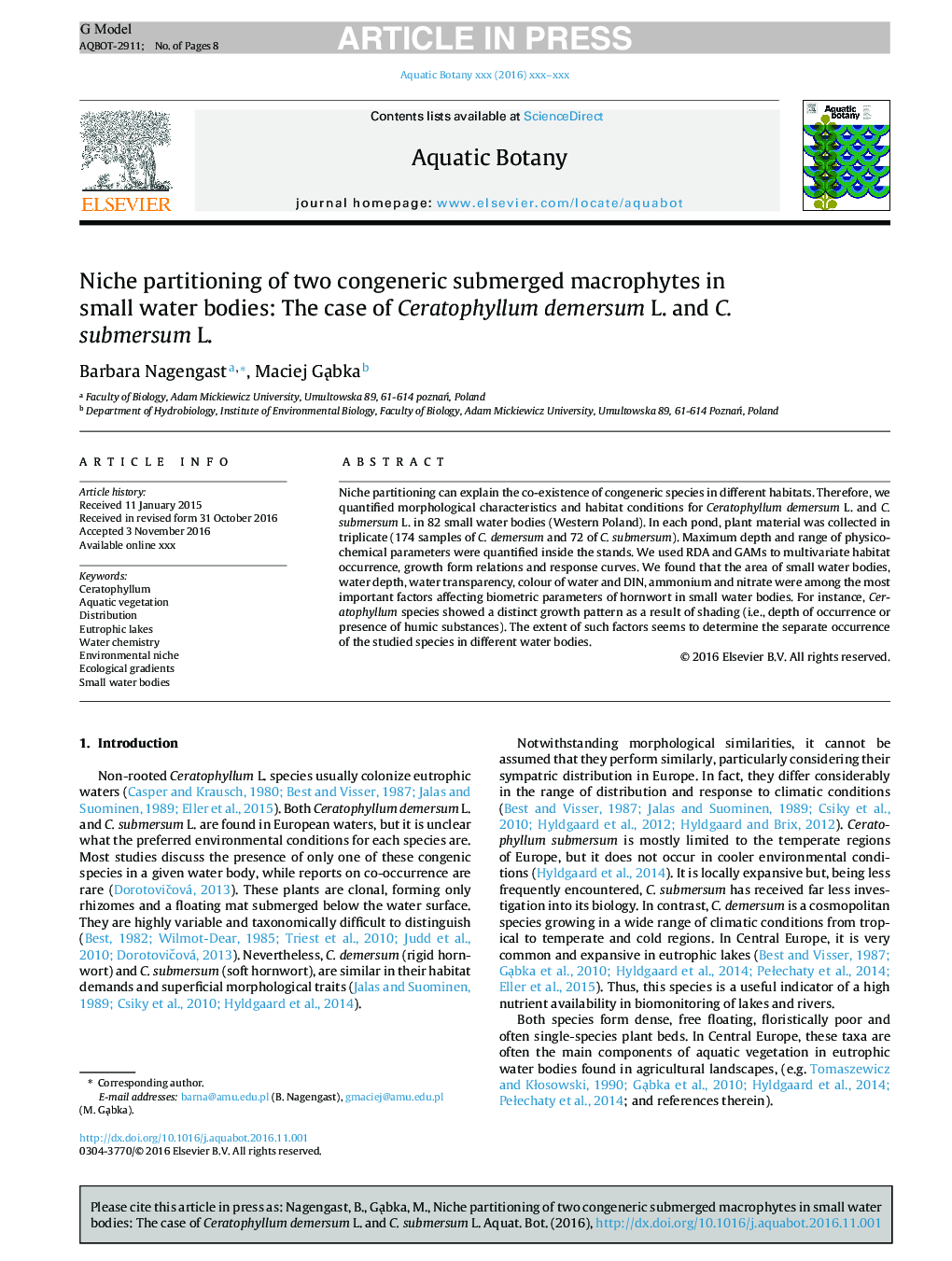| Article ID | Journal | Published Year | Pages | File Type |
|---|---|---|---|---|
| 5764035 | Aquatic Botany | 2017 | 8 Pages |
Abstract
The congeneric submerged macrophyte species Ceratophyllum demersum L. and C. submersum L. are seldom occurring together in a water body. To investigate whether this might be due to niche partitioning, we quantified morphological characteristics and habitat conditions for Ceratophyllum demersum and C. submersum in 82 small water bodies (Western Poland). In each pond, plant material was collected in triplicate (174 samples of C. demersum and 72 of C. submersum). Maximum depth and range of physicochemical parameters were quantified inside the stands. We used RDA and GAMs to assess multivariate habitat occurrence, growth form relations and response curves. Surface area, water depth, transparency, colour of water, DIN, ammonium and nitrate were among the most important factors affecting biometric parameters of hornwort in small water bodies. GAMs modelling of the occurrence of the two species suggest that C. demersum occurs in clearer waters whereas C. submersum is found in habitats with lower light availability, due to both colour (threshold around 100 mg Pt/L) and chlorophyll (threshold around 100 μg/L). Further experimental studies and field studies should substantiate the ecological niche occupied by both congeners in different water bodies.
Keywords
Related Topics
Life Sciences
Agricultural and Biological Sciences
Aquatic Science
Authors
Barbara Nagengast, Maciej GÄ
bka,
